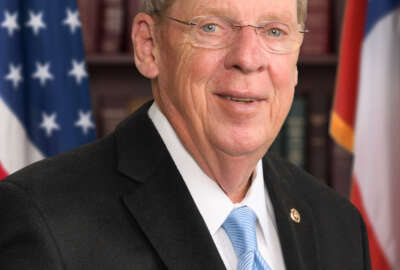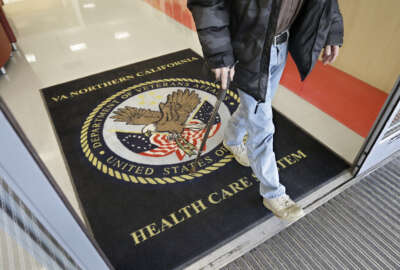
Election season to color congressional session
Pundits say every action that comes out of Capitol Hill this year — bills, nominations or hearings — has ties to the 2016 elections.
The new year brings a new session of Congress, and with it, questions of whether lawmakers will get their work done, what the final 12 months of the administration will bring, and how it all will impact federal agencies and the employees who support them.
President Barack Obama spent no time starting off his final year, announcing Tuesday an executive order on gun violence reform , and there’s now nine months until lawmakers must decide how to spend money on funding the government — or run the risk of yet another shutdown.
And through it all, members of both chambers will be fighting to hold their seats, support their parties’ presidential candidates and prove to the American people that Congress can not only work, but work together.
“To state the obvious, a presidential election year is uniquely political in Congress,” said David Hawkings, senior editor of CQ Roll Call during a discussion with Federal Drive with Tom Temin. “Almost everything that happens in Congress has some sort of presidential campaign or congressional campaign subtext. Almost every headline you see out of Congress you can probably trace back to the presidential race or the race for control of the Senate.”
A biennial budget and funding the government
In November, Congress and the White House agreed on a two-year federal budget deal that funds the government through fiscal 2017.
“Part of that deal that was essentially cut right as [former House Speaker] John Boehner (R-Ohio) was walking out the door as speaker … was an agreement for not only how much to spend in the budget year we’re in, but how much to spend in the budget year we’re now getting ready for, fiscal 2017, which starts only nine months from now on Oct. 1,” Hawkings said. “The top line on spending on both Defense and non-defense spending has been agreed to and that sets the stage for actually writing bills without a lot of disagreement about how much to spend. Everybody’s agreed on how much to spend, and there’s now plenty of time to do this work. Both [House Speaker] Paul Ryan (R-Wis.) and [Senate Minority Leader[ Mitch McConnell (R-Ky.) have said they really want to try to do what hasn’t been done in 20 years: Devote time to writing 12 different bills to fund the government and get them all passed and signed into law by the end of September.”
But Molly Reynolds, a governance studies fellow at the Brookings Institution, was skeptical.
“Congress can only do as much as they give themselves time to do,” she said. “The budget deal sort of set in place a top line framework, but still, Congress will have to do something to push that money out the door.”
While some individual appropriations might get through, Reynolds said she was not optimistic all 12 bills will get passed by Sept. 30. She predicted something like the past two presidential election years would happen: Spending bills are debated, a short-term continuing resolution is passed, and funding issues are taken up again after the election or in the new calendar year.
Kristine Simmons, vice president of government affairs for the Partnership for Public Service, took a similar view of the fiscal future.
“Although leaders are talking about ‘regular order’ for considering the fiscal 2017 bills, many of the policy riders that challenged negotiators at the end of last year will do so again,” Simmons said in an email to Federal News Radio. “And while the budget agreement may make it easier for the appropriations committees to move individual bills, there is simply no time to move them all given the hiatus Congress will take this summer for the party conventions and their own campaigning. I expect to see a continuing resolution that will fund the federal government beyond the November election, and final resolution on the FY17 spending bills during the lame duck session.”
Lame duck legislation
While the November elections and federal spending will take up most of lawmakers’ attention, there is room for some work to be done.
Simmons said that a long-term Federal Aviation Administration reauthorization bill might be one to watch for, along with the National Defense Authorization Act.
“The Partnership is particularly interested in legislation affecting the management of our government, including the federal workforce. We expect the House to pass [S. 1580] the Competitive Service Act, a hiring reform bill that has already passed the Senate with bipartisan support,” Simmons said. “Reforms to administrative leave and the probationary period for new federal employees and supervisors are also on Congress’ wish list.”
Reynolds said both Ryan and McConnell have their instructions for the remainder of the session. The House Speaker has said he wants to turn his party from one of opposition to “proposition,” while McConnell will be working to maintain the majority in the Senate.
She said if there is to be some policy-making this session, it will likely be from the White House — evidenced by Tuesday’s executive order.
Stagnant oversight, nominations, hiring and retention
The Department of Veterans Affairs was one agency that received a lot of congressional scrutiny in 2015, as did the IRS and Secret Service, but Reynolds said in an election year it’s unlikely lawmakers would turn on the spotlight for anything more than “fire alarm” scandals.
Hawkings had similar feelings, telling Federal Drive that Republican congressional members had “moved on,” and if they were going to investigate anything it might be another look at something like the attacks in Benghazi.
Hawkings also said it wasn’t likely there would be many more political nominations between now and November.
Pointing to the Education Department’s vacancy after former Secretary Arne Duncan stepped down in 2015, Hawkings said “the President doesn’t have much political capital left in Congress, he doesn’t want to spend it on some nomination fights, he doesn’t want to look goofy by sending nominees up and having the Republican Senate just sit on them,” Hawkings said.
That means many senior executives will be the ones running the show until those appointed positions can be filled.
Dan Blair, president of the National Academy of Public Administration, said that is why members of the federal workforce “have to be agile and rotate on a dime” in order to preserve the continuity of government.
Paul Posner, director of the graduate public administration program at George Mason University, and leader of the school’s Center on the Public Service, said this is a “remarkably benign period we’re coming into.”
“It’s a catch-up period too,” he added, not just for agencies to have a stable funding environment, but agencies will also likely be spared additional retirement and contribution mandates, while pay and hiring freezes might finally be thawing.
“It’s been a real chilling environment for the federal workforce for probably the last five years,” Posner said. “Ironically it was a time when the government really expanded under President Obama,” including health reform, and Dodd-Frank [Wall Street Reform and Consumer Protection Act].
“So we’ve got a lot of catch up to do, not only for the years we’ve under-invested, but all the institutional lethargy we seemed to be trapped in, that’s what worries me the most,” Posner said.
Posner said more jobs might be left open and vacant, because “most ambitious people do not want to join a sinking ship … an administration that’s about to leave. You’ve got about 10 months of useful work, maybe assuming they can’t replace you.”
“These times, doors are opening from the inside out,” Posner added. “More people are going to be exiting.”
Copyright © 2025 Federal News Network. All rights reserved. This website is not intended for users located within the European Economic Area.




